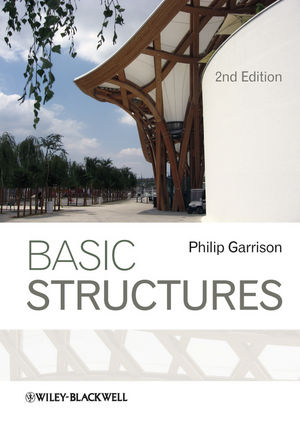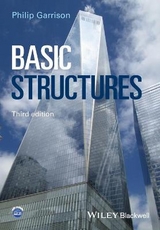
Basic Structures
Wiley-Blackwell (an imprint of John Wiley & Sons Ltd) (Verlag)
978-1-4443-3616-0 (ISBN)
- Titel ist leider vergriffen;
keine Neuauflage - Artikel merken
Structural engineering is a key part of the design of the entire built environment. How a structure, for example a building or bridge, behaves when subjected to various forces the weight of the materials that were used to build it, the weight of the occupants in it or the traffic it carries, the force of the wind etc is fundamental to its success. Students of construction, architecture and civil engineering have to be confident in their understanding of structures, but many find the basic concepts difficult to understand and apply. Basic Structures provides the student with a clear explanation of structural concepts, using many analogies and examples. Real examples and case studies show the concepts in use, and the book is well illustrated with full colour photographs and many line illustrations, giving the student a thorough grounding in the fundamentals and a 'feel' for the way buildings behave structurally. With many worked examples and tutorial questions, the book serves as an ideal introduction to the subject.
Three new chapters are added to this edition, two of which serve as an introduction to the design process by describing the principles and processes on which structural design is based, and showing the range of designs that can be achieved with modern methods. In addition, the concepts of deflection are introduced in a third new chapter. Reviews of the first edition "Philip Garrison approaches the subject in a gentle user-friendly style with clear explanations and numerous explanatory diagrams supported by well-worked examples and a number of exercises." Building Engineer "This book is well thought out, well written and would provide a good introduction to basic principles. It is aimed at those just starting their studies, but would be useful to those requiring a recap of first principles." The Structural Engineer
Philip Garrison has worked as a structural engineer on a wide variety of projects in the UK and overseas and is currently senior lecturer in structural engineering in the School of the Built Environment at Leeds Metropolitan University.
Introduction. Acknowledgements. 1 What is structural engineering? 2 Learn the language: a simple explanation of terms used by structural engineers. 3 How do structures (and parts of structures) behave? 4 Force, mass and weight. 5 Loading dead or alive. 6 Equilibrium a balanced approach. 7 More about forces: resultants and components. 8 Moments. 9 Reactions. 10 Different types of support and what's a pin? 11 A few words about stability. 12 Introduction to the analysis of pin-jointed frames. 13 Method of resolution at joints. 14 Method of sections. 15 Graphical method. 16 Shear force and bending moments. 17 This thing called stress. 18 Direct (and shear) stress. 19 Bending stress. 20 Combined bending and axial stress. 21 Structural materials: concrete, steel, timber and masonry. 22 More on materials. 23 How far can I span? 24 Calculating those loads. 25 An introduction to structural design. 26 More on structural types and forms. 27 An introduction to deflection. Further reading. Appendix 1: Weights of common building materials. Appendix 2: Conversions and relationships between units. Appendix 3: Mathematics associated with right-angled triangles. Appendix 4: Symbols. Appendix 5: A checklist for architects. Index.
| Zusatzinfo | Illustrations (some col.) |
|---|---|
| Verlagsort | Chicester |
| Sprache | englisch |
| Maße | 173 x 243 mm |
| Gewicht | 808 g |
| Themenwelt | Technik ► Bauwesen |
| ISBN-10 | 1-4443-3616-9 / 1444336169 |
| ISBN-13 | 978-1-4443-3616-0 / 9781444336160 |
| Zustand | Neuware |
| Informationen gemäß Produktsicherheitsverordnung (GPSR) | |
| Haben Sie eine Frage zum Produkt? |
aus dem Bereich



